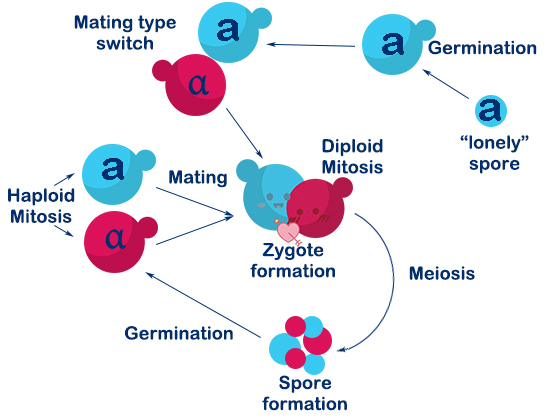| Line 456: | Line 456: | ||
</div> | </div> | ||
<div class="collapse-card__body"> | <div class="collapse-card__body"> | ||
| − | <h4> | + | <h4>OVERVIEW </h4> |
| − | + | <hr> | |
| − | <p> | + | <p> The genetic circuit based on the Vika-Vox system in genetically-engineered yeast enables stepwise treatment of heavy metal ions by a switch from the expression of Cup1 metallothionein (copper accumulation) to the expression of LIMT metallothionein (cadmium accumulation). We measure the concentration of heavy metal ions in the supernatant at equal intervals to test the efficiency of our system. </p> |
| − | + | <h4>BACKGROUND</h4> | |
| − | + | ||
| − | <h4> | + | |
<hr> | <hr> | ||
| − | <p>Cup1 | + | <p>Cup1 is a kind of metallothionein which can combine with copper ions in yeast. |
| − | + | As a metallothionein in Littorina littorea, LIMT is capable of binding a large number of cadmium ions. </p> | |
| − | <h4> | + | <hr> |
| + | <h4>EXPERIMENT DESIGN</h4> | ||
<hr> | <hr> | ||
| − | <h5>1 | + | <h5>1) construction of S.C-Cu(Cd) <h5> |
| − | <p> | + | <p> The TEF promoter, the Cup1 gene, and the URA3 terminator are ligated together by overlap PCR, and then the sequence is integrated into vox-ura3-vox system by yeast's homologous recombination. 5-FOA plate help us to screen the correct cell after transferring. Similarly, the CdM gene and the URA3 nutritional label are integrated into the same chromosome. Screened by SC-ura3, we complete genetic circuit as figure(1) showing below.</p> |
| − | + | <h5>3) Switch </h5> | |
| − | <h5> | + | A vector able to express the Vika recombinase is also transformed into the yeast strain. The expression of Vika enzymes can be induced by galactose. Then the Cup1 gene along with its terminator will be deleted by Vika recombinase hence the initiation of the expression of LIM metallothionein. S.C-Cu is turned to S.C-Cd. |
| − | <p> | + | <h5>2) Copper Ions Accumulation</h5> |
| − | + | <p> After completing the construction of the genetic circuit, we start to test the efficiency of copper accumulation. Firstly, S.C-Cu, S8(screened by SCRaMbLE ) and BY4741 are cultured in YPD liquid media for 24 hours to accumulate them. after that the 430 mg/L copper ions solution is added to the media. The yeast cells are cultured in this solution for another 45 hours (30℃). Atomic absorption spectroscopy is used to measure the concentration of copper ions in the supernatant every 5 hours. According to the concentration change of copper ions at equal time intervals. We depict the adsorption curve of copper ions. </p> | |
| + | <h5>3) Cadmium Ions Accumulation </h5> | ||
| + | <p>in order to reveal the yeast’s influences on cadmium ions, we culture Cd Yeast, S1 and BY4741 in YPD Liquid medium for 24 hours. after that the xx mg/L cadmium ions solution is added to the media. The yeast cells are cultured in this solution for another xx hours (30℃). the concentration of cadmium ions in the supernatant is measured every x hours. The results are plotted as the adsorption curve in figure. | ||
| + | </p> | ||
| + | <h5>4) Separation of Copper and Cadmium Ions</h5> | ||
| + | <p> In the end, the accumulated S.C-Cu yeast strain is cultured in Sc medium with raffinose including copper ions and cadmium ions for xx hours. Galactose is added after XX hours of culture in media containing heavy metal ions. Switch will be activated. The separation of Copper and Cadmium ions may be observed in heavy metal curve. </p> | ||
| − | |||
| − | |||
Revision as of 14:55, 27 October 2017
/* OVERRIDE IGEM SETTINGS */
Design
Background
Human existence on earth is almost impossible without the heavy metals. Even though important to mankind, exposure to them during production, usage and their uncontrolled discharge in to the environment has caused lots of hazards to man, other organisms and the environment itself. Heavy metals can enter human tissues and organs via inhalation, diet, and manual handling. As the process of urbanization and industrialization goes deeper and deeper, heavy metal pollution, a noticeable threaten to almost all the creatures, has become an essential problem to solve.
According to our human practice, the situation of heavy metal pollution (copper and cadmium ions) is marked on a world map, and the severity of heavy metal pollution has been increasing all over this map. Places with serious pollution includes middle Asia, eastern Asia, southern Europe, and Latin America. In addition, not only fresh water sources, but also soil and crops are seriously contaminated by heavy metals. On average, during three out of ten suppers we have, we absorb excess heavy metals over the standard concentration.
Considering the rigorous situation we face, our team decided to design an advanced system for typical toxic heavy metal disposal based on Saccharomyces cerevisiae.








